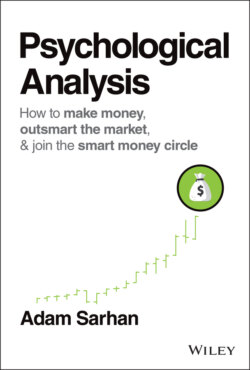Читать книгу Psychological Analysis - Adam Sarhan - Страница 30
BEATING THE MARKET
ОглавлениеIt was more than just “not bad”; it was in fact very, very good. At the risk of seeming immodest, the best multi‐million and ‐billion fund managers generate average annual returns of about 20%, and the real legends averaged about 30%, so I felt like I had developed the chops to compete—and win—with the “smart” money.
The big difference, of course, is that the titans of Wall Street were dealing with big money, and I was dealing with small money. Still working my way out of debt, I didn't even have the resources to profit in the market because a 20% return after one year on $10,000 is only $2,000. No one can live on $2,000 a year in the Western world. I knew that I had to keep pushing.
Stephen Klein (who had also learned from our early mistakes and was an up‐and‐comer on The Street) kept up with my newsletter and found value in the information I provided. One day he asked, “Why don't you sell it?” I had never considered profiting off the newsletter—not beyond eventually being able to put some real money behind the paper trades—but it made sense. I had established a decent track record that proved that I could beat the market, and I knew that most people couldn't, so there was definitely value there.
Beating the market—also known as generating alpha—refers to earning annual returns that surpass the performance of the primary indexes such as the S&P 500, the Dow Jones Industrial Average, or the Nasdaq Composite—each of which represents a broad swath of the overall market. When the market does well, most of the time the indexes do well; when the market falls, generally the indexes fall. Here's one extremely valuable fact that I want you to internalize and live by (especially if you are a pessimist or have a bearish leaning): in the United States, over the course of several decades, the market tends to go up!
For example, on average, the benchmark S&P 500 has returned around 8–10% per year since the early 1900s. Keep in mind that some years it is down double digits, some years are really strong and it jumps over 20%, and some years it is flat (up or down a few percentage points). But for the most part, it has averaged a steady gain of about 8–10% per year. In his letters to the shareholders of Berkshire Hathaway, the legendary investor Warren Buffett has described this phenomenon as the “American Tailwind.”
Before I go any further, pause for a second and really digest this fact. The market tends to go up over time, so ask yourself how you are going to profit from the American Tailwind? However you decide to invest or trade in the market, you will be greatly rewarded if you factor in the baseline growth that has propelled the American stock market for centuries and figure out how you can profit from that incredible force, not fight it.
